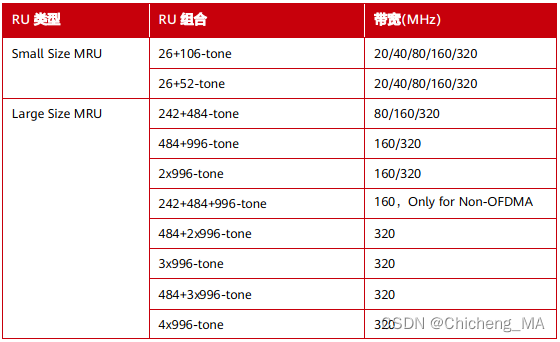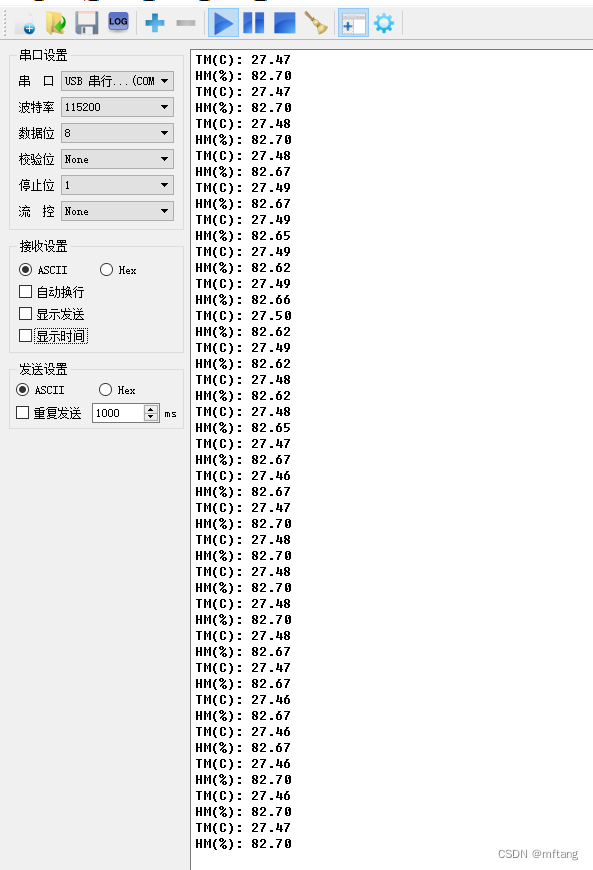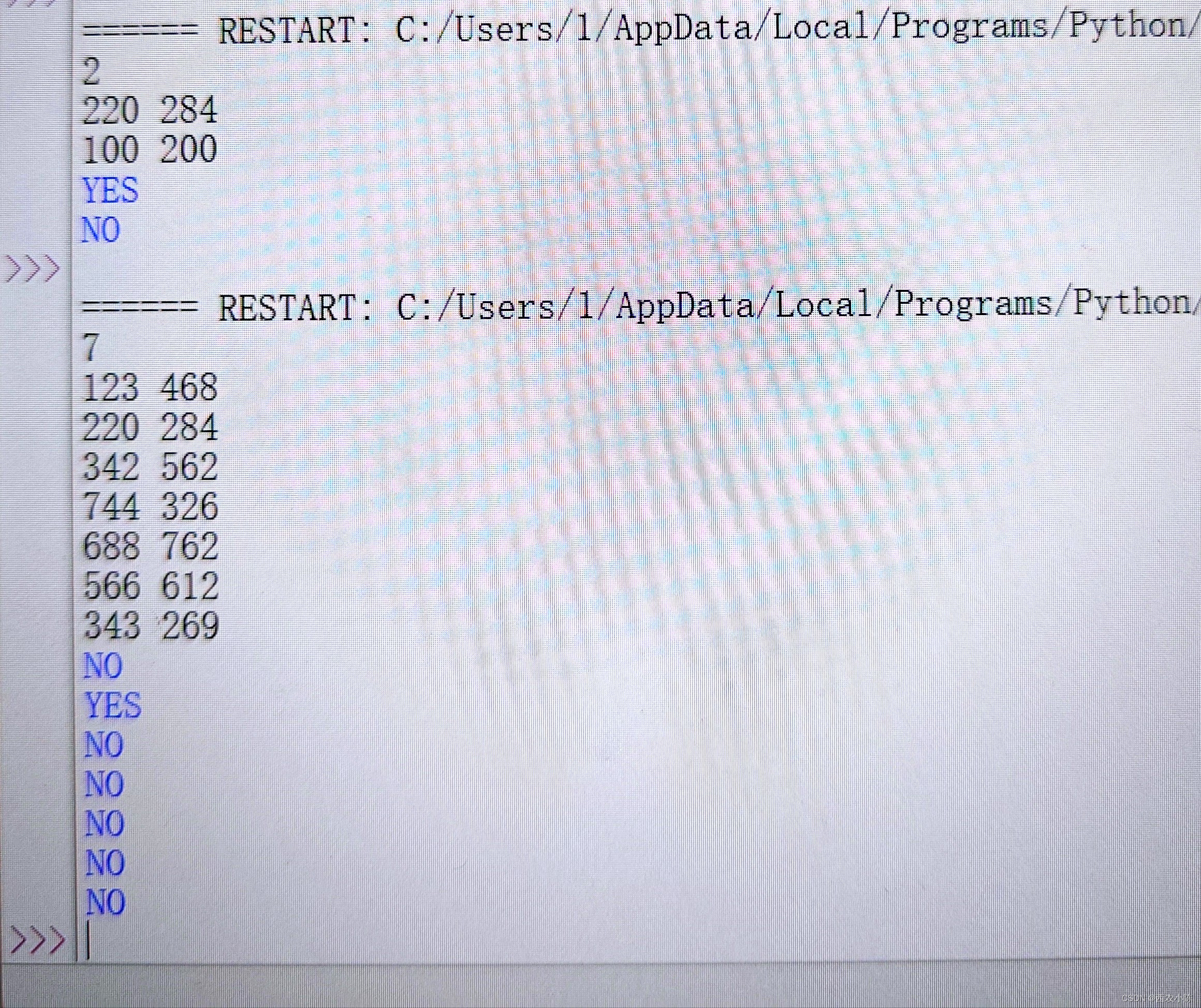例一 空气被充入一个球形气球中,使其体积以每秒100立方厘米的速度增加。当气球的直径为50厘米时,气球半径的增加速度是多少?
解答:球体的体积公式为
V
=
4
3
π
r
3
V = \frac{4}{3}\pi r^3
V=34πr3
为了使用给定的信息,我们对该方程的两边关于 t t t 求导。为了对右侧求导,我们需要使用链式法则:
d V d t = d V d r ⋅ d r d t = 4 π r 2 ⋅ d r d t \frac{dV}{dt} = \frac{dV}{dr} \cdot \frac{dr}{dt} = 4 \pi r^2 \cdot \frac{dr}{dt} dtdV=drdV⋅dtdr=4πr2⋅dtdr
现在我们求未知量:
d r d t = 1 4 π r 2 ⋅ d V d t \frac{dr}{dt} = \frac{1}{4 \pi r^2} \cdot \frac{dV}{dt} dtdr=4πr21⋅dtdV
如果在该方程中代入 r = 25 r = 25 r=25 和 d V d t = 100 \frac{dV}{dt} = 100 dtdV=100,我们得到:
d r d t = 1 4 π ( 25 ) 2 ⋅ 100 = 1 25 π \frac{dr}{dt} = \frac{1}{4 \pi (25)^2} \cdot 100 = \frac{1}{25 \pi} dtdr=4π(25)21⋅100=25π1
例二 一把10英尺长的梯子靠在垂直墙上。如果梯子的底部以每秒1英尺的速度远离墙壁,那么当梯子的底部距离墙壁6英尺时,梯子的顶部以多快的速度沿墙滑下?
解答:我们首先绘制一个图。设
x
x
x英尺是梯子底部到墙的距离,
y
y
y英尺是梯子顶部到地面的距离。注意,
x
x
x和
y
y
y都是时间
t
t
t的函数(时间以秒为单位)。

在这个问题中, x x x和 y y y之间的关系由勾股定理给出:
x 2 + y 2 = 100 x^2 + y^2 = 100 x2+y2=100
对每一侧使用链式法则对(t)进行求导,我们得到
2 x d x d t + 2 y d y d t = 0 2x \frac{dx}{dt} + 2y \frac{dy}{dt} = 0 2xdtdx+2ydtdy=0
解这个方程得到所需的速度:
d y d t = − x y d x d t \frac{dy}{dt} = -\frac{x}{y} \frac{dx}{dt} dtdy=−yxdtdx
当 x = 6 x = 6 x=6时,由勾股定理可得 y = 8 y = 8 y=8,因此,代入这些数值 d x d t = 1 \frac{dx}{dt} = 1 dtdx=1,我们得到
d y d t = − 6 8 ( 1 ) = − 3 4 英尺/秒 \frac{dy}{dt} = -\frac{6}{8}(1) = -\frac{3}{4} \text{ 英尺/秒} dtdy=−86(1)=−43 英尺/秒
例三 一个水箱的形状是倒置的圆锥形,底面半径为2米,高为4米。如果水以每分钟2立方米的速度注入水箱,求当水深为3米时水位上升的速度。
解答:我们首先绘制圆锥并如图标记。设
V
V
V、
r
r
r 和
h
h
h 分别为水的体积、表面半径和水的高度,时间
t
t
t 以分钟为单位。

我们知道 d V d t = 2 立方米/分钟 \frac{dV}{dt} = 2 \text{ 立方米/分钟} dtdV=2 立方米/分钟,要求当 h = 3 h = 3 h=3 米时的 d h d t \frac{dh}{dt} dtdh。 V V V 和 h h h 的关系由以下公式给出:
V = 1 3 π r 2 h V = \frac{1}{3} \pi r^2 h V=31πr2h
但将 V V V 表示为仅关于 h h h 的函数更为有用。为了消去 r r r,我们使用图3中的相似三角形写出:
r h = 2 4 ⟹ r = h 2 \frac{r}{h} = \frac{2}{4} \implies r = \frac{h}{2} hr=42⟹r=2h
则 V V V 的表达式变为:
V = 1 3 π ( h 2 ) 2 h = π 12 h 3 V = \frac{1}{3} \pi \left(\frac{h}{2}\right)^2 h = \frac{\pi}{12} h^3 V=31π(2h)2h=12πh3
现在我们可以对每一侧关于 t t t 进行求导:
d V d t = π 4 h 2 d h d t \frac{dV}{dt} = \frac{\pi}{4} h^2 \frac{dh}{dt} dtdV=4πh2dtdh
因此
d h d t = 4 π h 2 d V d t \frac{dh}{dt} = \frac{4}{\pi h^2} \frac{dV}{dt} dtdh=πh24dtdV
代入 h = 3 h = 3 h=3 米和 d V d t = 2 立方米/分钟 \frac{dV}{dt} = 2 \text{ 立方米/分钟} dtdV=2 立方米/分钟,我们得到:
d h d t = 4 π ( 3 ) 2 ⋅ 2 = 8 9 π \frac{dh}{dt} = \frac{4}{\pi (3)^2} \cdot 2 = \frac{8}{9\pi} dtdh=π(3)24⋅2=9π8
水位上升的速度为 8 9 π ≈ 0.28 米/分钟 \frac{8}{9\pi} \approx 0.28 \text{ 米/分钟} 9π8≈0.28 米/分钟。
例四 A车以每小时50英里的速度向西行驶,B车以每小时60英里的速度向北行驶。两车都驶向两条路的交叉口。当A车距离交叉口0.3英里,B车距离交叉口0.4英里时,两车以多快的速度相互接近?
解答:我们绘制图,其中
C
C
C 是道路的交叉口。在给定的时间
t
t
t,设
x
x
x 为A车到
C
C
C 的距离,
y
y
y 为B车到
C
C
C 的距离,
z
z
z 为两车之间的距离,
x
x
x、
y
y
y 和
z
z
z 以英里为单位。

我们知道 d x d t = − 50 \frac{dx}{dt} = -50 dtdx=−50 英里/小时和 d y d t = − 60 \frac{dy}{dt} = -60 dtdy=−60 英里/小时(导数为负数,因为 x x x 和 y y y 随着 t t t 的增加而减少)。我们要求 d z d t \frac{dz}{dt} dtdz。 x x x、 y y y 和 z z z 之间的关系由勾股定理给出:
z 2 = x 2 + y 2 z^2 = x^2 + y^2 z2=x2+y2
对每一侧关于 t t t 进行求导,我们得到
2 z d z d t = 2 x d x d t + 2 y d y d t 2z \frac{dz}{dt} = 2x \frac{dx}{dt} + 2y \frac{dy}{dt} 2zdtdz=2xdtdx+2ydtdy
d z d t = 1 z ( x d x d t + y d y d t ) \frac{dz}{dt} = \frac{1}{z} \left( x \frac{dx}{dt} + y \frac{dy}{dt} \right) dtdz=z1(xdtdx+ydtdy)
当 x = 0.3 x = 0.3 x=0.3 英里和 y = 0.4 y = 0.4 y=0.4 英里时,勾股定理得出 z = 0.5 z = 0.5 z=0.5 英里,因此
d z d t = 1 0.5 [ 0.3 ( − 50 ) + 0.4 ( − 60 ) ] = − 78 英里/小时 \frac{dz}{dt} = \frac{1}{0.5} \left[0.3(-50) + 0.4(-60)\right] = -78 \text{ 英里/小时} dtdz=0.51[0.3(−50)+0.4(−60)]=−78 英里/小时
两车相互接近的速度为每小时78英里。
例五 一个人沿着直路以每秒4英尺的速度行走。一个探照灯位于距这条路20英尺的地面上,并始终聚焦在这个人身上。当这个人距探照灯最近点15英尺时,探照灯以多快的速度旋转?
解答:我们绘制图,并设
x
x
x 为人到路径上离探照灯最近点的距离。我们设
θ
\theta
θ 为探照灯光束与路径垂线之间的角度。

我们知道 d x d t = 4 英尺/秒 \frac{dx}{dt} = 4 \text{英尺/秒} dtdx=4英尺/秒,要求当 x = 15 x = 15 x=15 时的 d θ d t \frac{d\theta}{dt} dtdθ。从图5可以写出 x x x 和 θ \theta θ 之间的关系:
x 20 = tan θ ⟹ x = 20 tan θ \frac{x}{20} = \tan \theta \implies x = 20 \tan \theta 20x=tanθ⟹x=20tanθ
对每一侧关于 t t t 进行求导,我们得到
d x d t = 20 sec 2 θ d θ d t \frac{dx}{dt} = 20 \sec^2 \theta \frac{d\theta}{dt} dtdx=20sec2θdtdθ
因此
d θ d t = d x d t 20 sec 2 θ \frac{d\theta}{dt} = \frac{\frac{dx}{dt}}{20 \sec^2 \theta} dtdθ=20sec2θdtdx
当 x = 15 x = 15 x=15 时,
15 = 20 tan θ ⟹ tan θ = 15 20 = 3 4 15 = 20 \tan \theta \implies \tan \theta = \frac{15}{20} = \frac{3}{4} 15=20tanθ⟹tanθ=2015=43
因此
sec θ = 1 + tan 2 θ = 1 + ( 3 4 ) 2 = 1 + 9 16 = 25 16 = 5 4 \sec \theta = \sqrt{1 + \tan^2 \theta} = \sqrt{1 + \left(\frac{3}{4}\right)^2} = \sqrt{1 + \frac{9}{16}} = \sqrt{\frac{25}{16}} = \frac{5}{4} secθ=1+tan2θ=1+(43)2=1+169=1625=45
代入 d x d t = 4 \frac{dx}{dt} = 4 dtdx=4 和 sec θ = 5 4 \sec \theta = \frac{5}{4} secθ=45,我们得到:
d θ d t = 4 20 ( 5 4 ) 2 = 4 20 ⋅ 25 16 = 4 ⋅ 16 20 ⋅ 25 = 64 500 = 16 125 ≈ 0.128 弧度/秒 \frac{d\theta}{dt} = \frac{4}{20 \left(\frac{5}{4}\right)^2} = \frac{4}{20 \cdot \frac{25}{16}} = \frac{4 \cdot 16}{20 \cdot 25} = \frac{64}{500} = \frac{16}{125} \approx 0.128 \text{弧度/秒} dtdθ=20(45)24=20⋅16254=20⋅254⋅16=50064=12516≈0.128弧度/秒
探照灯旋转的速度约为每秒0.128弧度。



















